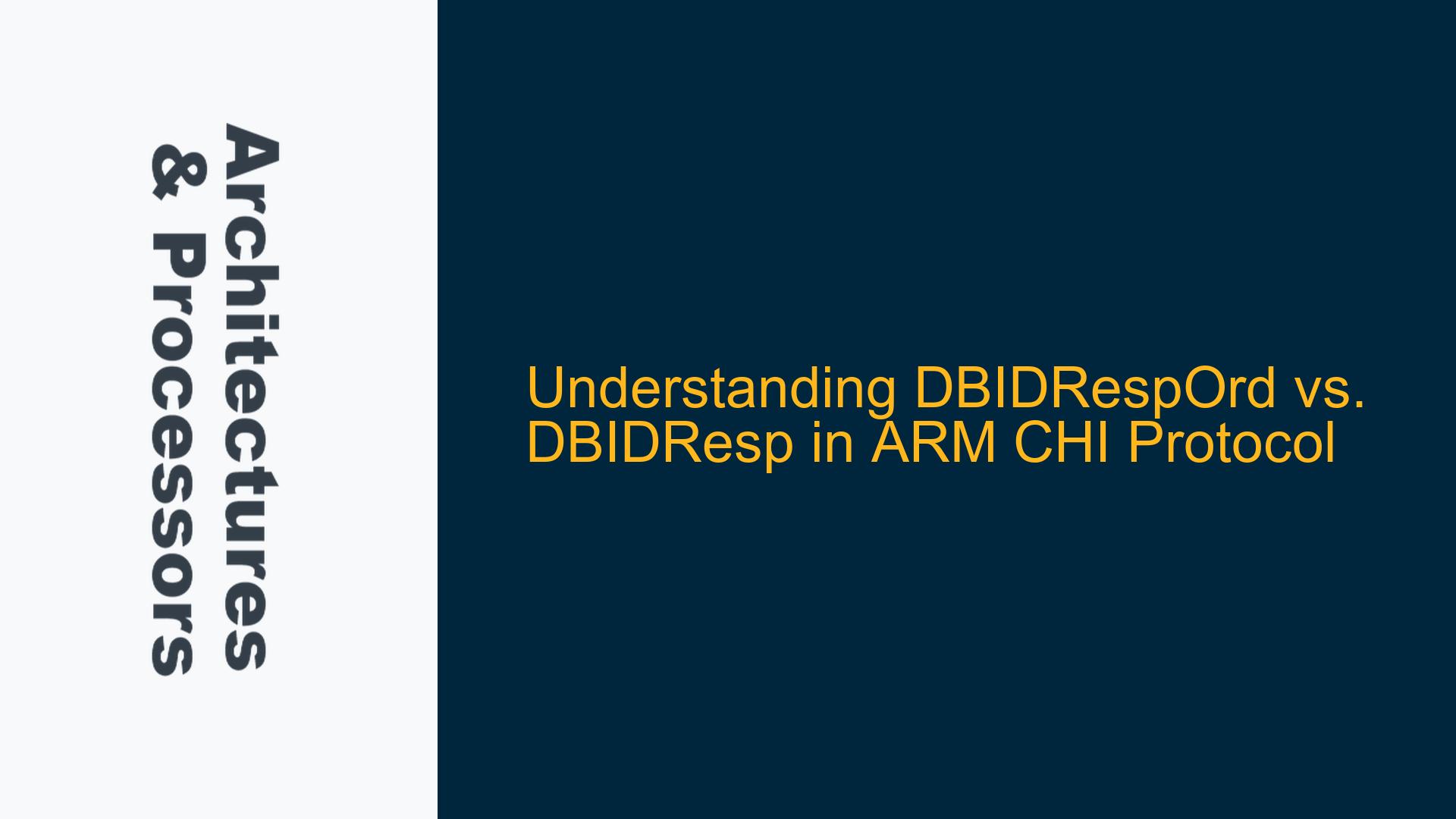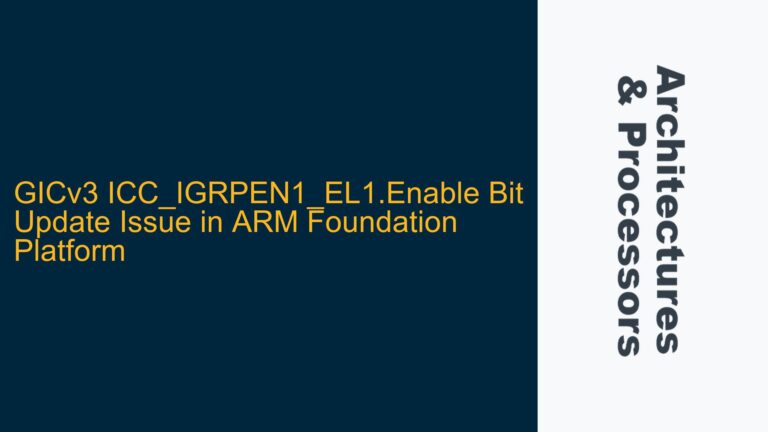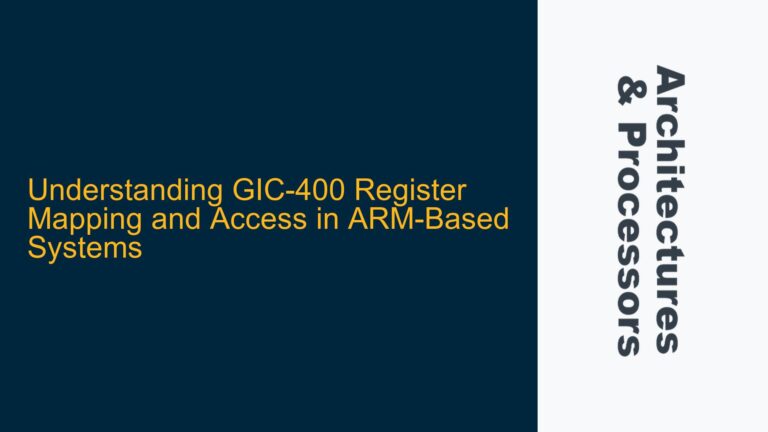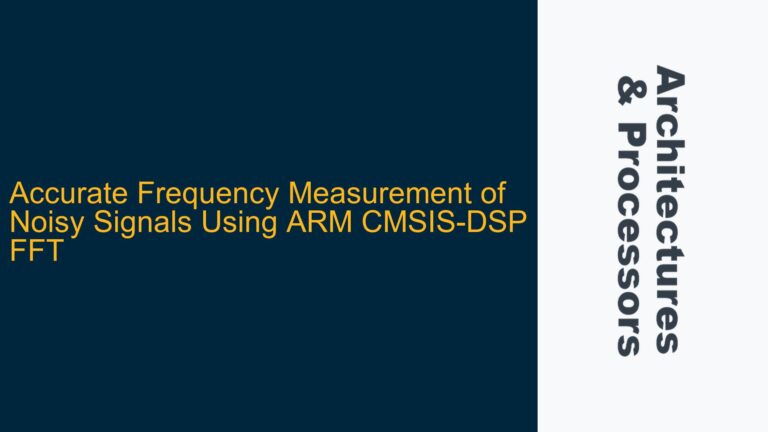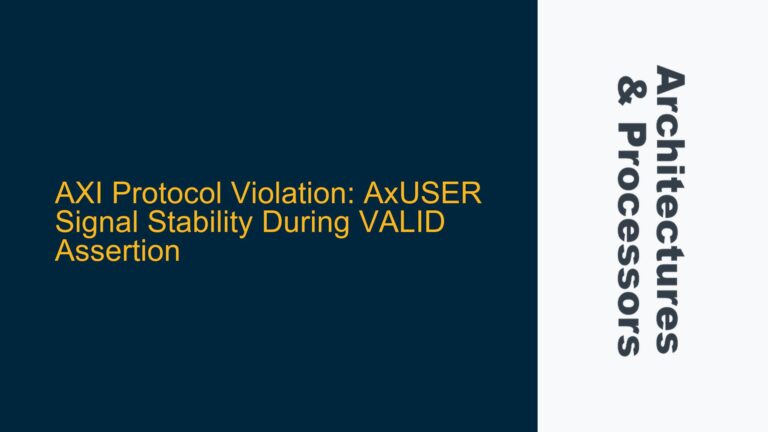Issue Overview: The Role and Necessity of DBIDRespOrd in ARM CHI Protocol
The ARM Coherent Hub Interface (CHI) protocol is a critical component in modern ARM-based systems, enabling efficient communication between processors, caches, and memory controllers. Within this protocol, the DBIDResp and DBIDRespOrd transactions play pivotal roles in managing data flow and maintaining coherency. However, the distinction between these two transactions is not immediately obvious, leading to confusion about their respective use cases and advantages.
DBIDResp (Data Buffer ID Response) is a transaction used to acknowledge the receipt of a data buffer identifier, ensuring that the requester can proceed with data transfer operations. On the other hand, DBIDRespOrd (Data Buffer ID Response Ordered) serves a similar purpose but introduces an additional layer of ordering guarantees. The primary question arises: why does DBIDRespOrd exist when DBIDResp seems functionally sufficient? To answer this, we must delve into the intricacies of the CHI protocol, the nature of ordered transactions, and the specific scenarios where DBIDRespOrd provides tangible benefits.
The CHI protocol is designed to handle complex multi-core systems where multiple agents (such as CPUs, GPUs, and accelerators) interact with shared resources. In such environments, maintaining strict ordering of transactions is crucial to ensure data consistency and avoid race conditions. While DBIDResp provides a basic acknowledgment mechanism, DBIDRespOrd ensures that responses are delivered in a specific order, aligning with the sequence of requests. This ordering guarantee is particularly important in systems where out-of-order execution or reordering of transactions could lead to coherency violations or data corruption.
Possible Causes: Scenarios Where DBIDRespOrd Outperforms DBIDResp
The necessity of DBIDRespOrd becomes apparent when considering the following scenarios:
-
Strict Transaction Ordering Requirements: In systems where the order of operations is critical, such as those involving atomic operations or memory barriers, DBIDRespOrd ensures that responses are processed in the correct sequence. For example, in a multi-threaded application where threads rely on specific memory access patterns, out-of-order responses could lead to incorrect results or deadlocks. DBIDRespOrd mitigates this risk by enforcing a strict ordering of responses.
-
High-Performance Computing (HPC) Workloads: HPC applications often involve complex data dependencies and require precise control over transaction ordering. In such environments, DBIDRespOrd provides the necessary guarantees to maintain data integrity and optimize performance. Without ordered responses, the system might experience bottlenecks or inefficiencies due to reordering of critical transactions.
-
Real-Time Systems: Real-time systems demand predictable and deterministic behavior. DBIDRespOrd ensures that responses are delivered in a predictable order, which is essential for meeting real-time deadlines. In contrast, DBIDResp might introduce variability in response timing, leading to missed deadlines or degraded system performance.
-
Complex Cache Coherency Protocols: In systems with intricate cache coherency protocols, maintaining the order of transactions is vital to avoid coherency violations. DBIDRespOrd aligns with the requirements of such protocols, ensuring that responses are processed in the correct sequence and preventing potential coherency issues.
-
Debugging and Diagnostics: Ordered responses simplify debugging and diagnostics by providing a clear and predictable sequence of transactions. This is particularly useful in identifying and resolving issues related to data flow and coherency.
Troubleshooting Steps, Solutions & Fixes: Implementing and Optimizing DBIDRespOrd
To effectively implement and optimize DBIDRespOrd in ARM-based systems, consider the following steps:
-
Analyze System Requirements: Begin by thoroughly analyzing the system requirements to determine whether strict transaction ordering is necessary. Identify scenarios where out-of-order responses could lead to coherency violations, data corruption, or performance degradation. This analysis will help justify the use of DBIDRespOrd over DBIDResp.
-
Evaluate Performance Impact: Assess the performance impact of using DBIDRespOrd. While ordered responses provide critical guarantees, they might introduce additional latency or overhead. Use simulation tools and performance models to quantify this impact and ensure that it aligns with system goals.
-
Implement Ordered Response Logic: Integrate DBIDRespOrd logic into the CHI protocol implementation. This involves modifying the response handling mechanism to enforce strict ordering of transactions. Ensure that the implementation adheres to the ARM CHI specification and is thoroughly tested for correctness.
-
Optimize for Specific Workloads: Tailor the use of DBIDRespOrd to specific workloads and use cases. For example, in HPC applications, prioritize ordered responses for critical data paths while allowing more flexibility in less sensitive areas. This optimization ensures that the benefits of DBIDRespOrd are maximized without unnecessary overhead.
-
Leverage ARM Tools and Resources: Utilize ARM’s development tools and resources to streamline the implementation and optimization of DBIDRespOrd. ARM provides comprehensive documentation, simulation environments, and debugging tools that can aid in understanding and implementing the CHI protocol effectively.
-
Conduct Rigorous Testing: Perform extensive testing to validate the correctness and performance of the DBIDRespOrd implementation. Use a combination of unit tests, integration tests, and system-level tests to ensure that ordered responses function as intended and do not introduce new issues.
-
Monitor and Debug in Real-Time: Implement monitoring and debugging mechanisms to observe the behavior of DBIDRespOrd in real-time. Use ARM’s trace and profiling tools to capture transaction sequences and identify any anomalies or performance bottlenecks. This real-time feedback is invaluable for fine-tuning the implementation.
-
Iterate and Refine: Continuously iterate and refine the DBIDRespOrd implementation based on testing and monitoring results. Address any identified issues and optimize the implementation to achieve the desired balance between performance and correctness.
By following these steps, you can effectively implement and optimize DBIDRespOrd in ARM-based systems, ensuring that the benefits of ordered responses are fully realized. This approach not only enhances system performance and reliability but also provides a robust foundation for handling complex workloads and maintaining data integrity in multi-core environments.
In conclusion, while DBIDResp and DBIDRespOrd serve similar purposes in the ARM CHI protocol, the latter’s strict ordering guarantees make it indispensable in scenarios where transaction sequence is critical. By understanding the nuances of these transactions and implementing DBIDRespOrd judiciously, you can unlock the full potential of ARM-based systems and ensure their optimal performance and reliability.
